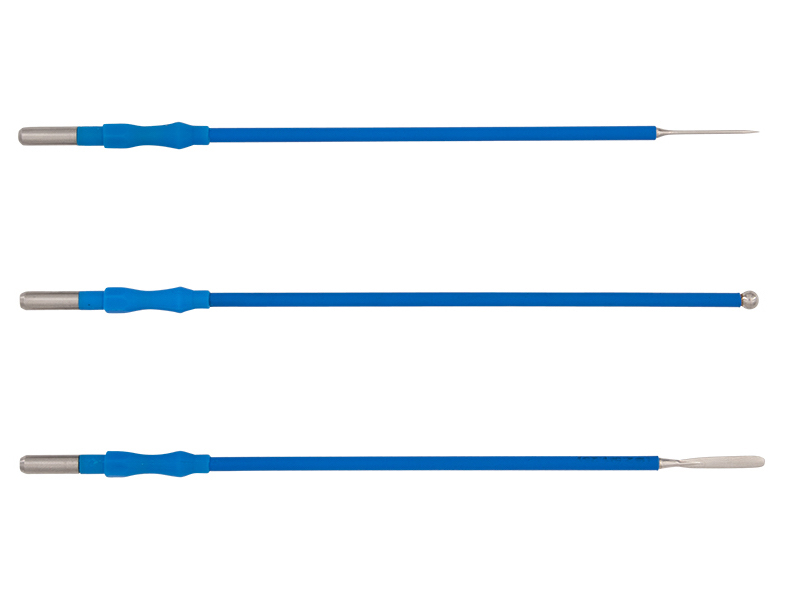What is high-frequency surgery (HF surgery)?
In high-frequency surgery (=HF surgery (or diathermy as well as electrocautery), electricity is passed through the tissue inside the body. Depending on the temperature, various effects result from the warming: Tissue or other cells of the body are changed or destroyed. This results in different possible applications. The most common applications of high-frequency surgery are the stopping of bleeding (haemostasis), which is often equated with coagulation* in the context of HF surgery (see link to FAQ question below), and the cutting of tissue. Depending on the procedure, different high-frequency surgical devices such as monopolar electrodes together with neutral electrodes or bipolar forceps are used for this.
How does high-frequency surgery work?
The principle of high-frequency surgery is to convert energy into heat through high-frequency current and to conduct this into the human body. This heats the tissue in the corresponding region. The high-frequency alternating electric current is conducted into a bipolar forceps or a monopolar electrode, depending on the chosen method. At the tip of the electrode, the energy concentration is so high that the desired electrosurgical effect is achieved there. When using monopolar electrodes, neutral electrodes must also be placed on the patient's body to close the circuit and protect the patient from burns. Several factors influence the reaction of the tissue and thus the result of the application. These are:
- level of temperature
- current density
- duration of the application
- speed at which the temperature is reached
- type of tissue
- type of electrode
- placement of the electrode (e.g. placement of the neutral electrode in monopolar method)
By converting electrical energy to thermal energy, different medical goals can be achieved depending on the temperature. HF surgery is most commonly used for stopping bleeding and cutting tissue.
Two HF application techniques: bipolar forceps and monopolar electrodes
Bipolar technique
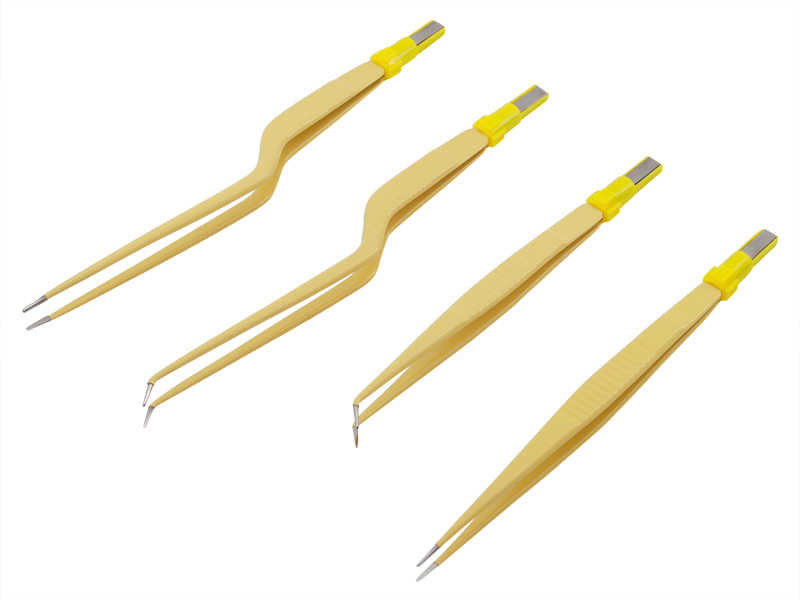
Bipolar forceps combine active and neutral electrodes in one device. The current flows into the tissue via one forceps shaft. The current is conducted out of the tissue via the other forceps shaft and back to the electrosurgical unit. Since the two electrodes are close together, only a very small area is affected by the application. When the forceps are used to stop bleeding, the blood vessels are grasped with the tips of the device and constricted by dehydration until they are completely occluded.
Non-stick technologies
When trying to detach the forceps from the tissue, tissue may rip off and the source of bleeding may reopen. The higher the temperature of the forceps, the more pronounced this effect. The heat conductivity is largely determined by the material of the (electrode/forceps). Silver ensures optimal heat dissipation during coagulation and thus prevents tissue adhesion.
Monopolar technique
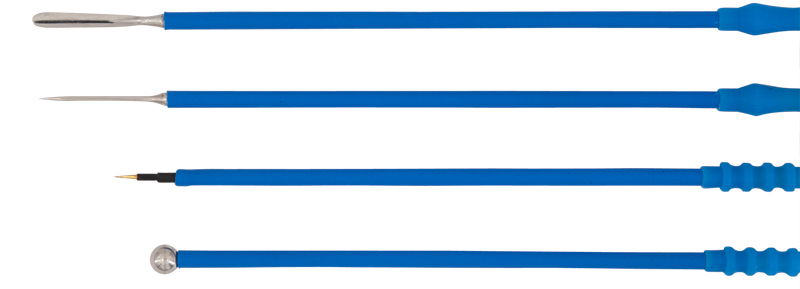
Monopolar electrodes are used with high-frequency current to cut and coagulate tissue throughout an electrosurgical surgery. The shaft of the electrode is inserted into a handle that is connected to a high-frequency device via a cable. In addition, a neutral electrode is attached to the patient's skin near the surgery throughout the electrosurgical procedure. The current flows from the unit via the active electrode, the area with the greatest thermal effect, to the neutral electrode and from there back into the electrosurgical unit. In this way, the circuit is closed through both electrodes. Overall, a larger area is affected than with the bipolar technique. The desired thermal effects for cutting or coagulating the tissue occur at the active electrode as described. The neutral electrode is usually placed on the patient's thigh or upper arm (near the surgical field). Correct placement is crucial to ensure that the current can flow freely and completely at this point. Please observe the instructions for use of the products in this regard.
Areas of application of high-frequency surgery
High-frequency surgery is used in almost all areas of surgery. In many surgical procedures, the cutting and simultaneous occlusion of blood vessels is used to an advantage. In this way, targeted cuttings can be made through tissue structures without considerable loss of blood and in a way that is gentle on the tissue. The spectrum of applications ranges from minimally invasive or endoscopic surgery to major laparotomy. The most frequent application is in bloodless dissection or resection as well as haemostasis. However, the targeted thermal treatment of lesions or tissue abnormalities is also possible. In the open surgical technique, bipolar forceps and monopolar electrodes are the most important instruments in electrosurgery.
For which application are bipolar forceps recommended?
Bipolar forceps enable very precise gripping, dissection and coagulation of tissue. They are therefore particularly suitable for surgical procedures in which the protection of neighbouring structures is of primary importance.
For which application are monopolar electrodes recommended?
In major surgeries, monopolar electrodes are a surgeon's most important instrument. Through adjustments on the HF unit and the handle, they enable both low-blood cutting and dissection as well as tissue-sparing coagulation and targeted haemostasis. The electrodes are available in a variety of shapes and lengths and can thus be selected to suit the respective application. Bild verschiedene Modellvarianten erstellen und einfügen
Advantages of high-frequency surgery
Compared to mechanical cutting, for example with a scalpel, high-frequency surgery offers the following advantages in particular:
- low-bleed surgery due to simultaneous coagulation during cutting
- targeted haemostasis even in narrow surgical areas
- uncomplicated and fast closure of blood vessels
- shorter time in surgery
- possibility of endoscopic use
With monopolar electrodes and bipolar forceps, the treated vessels can be closed optimally during electrochiurgy. Bipolar forceps allow very precise one-handed coagulation of blood vessels and dissection. In addition, the risk of burns is reduced. Further advantages compared to monopolar electrodes are the reduced interference with pacemakers and devices and the fact that they can be used without additional neutral electrodes. Monopolar electrodes are an integral part of modern surgery and are characterised by their wide range of applications. By selecting the operating mode on the HF unit and on the handle and the shape of the electrode, monopolar electrodes can be used in a wide range of surgical procedures. They are also used in minimally invasive surgery.
ActiLine EcoCeps bipolar forceps - very precise grasping, dissecting and coagulating
Soft-closing and non-slip high-profile ridging ensure a secure grip on ActiLine bipolar forceps and result in fatigue-free working. They are compatible with all common electrosurgical instruments.
Advantages of ActiLine EcoCeps bipolar forceps at a glance:
- ergonomic handles with angled cable guidance over the back of the hand
- non-slip high-profile grip for fatigue-free work and a secure hold, even when wearing gloves
- safe and precise grasping and coagulation of tissue (tip to tip)
- easy closing without crossing over thanks to soft closing
- proven functionality as with reusable forceps
- variety of shapes, sizes and lengths for a wide range of applications
- standard and special connections for all common instruments
ActiLine ArTec monopolar and neutral electrodes
ActiLine ArTec monopolar electrodes allow efficient gliding through tissue. They are optionally available with an overmoulded handle with integrated hexagonal lock. Electrode coating available for most models prevents tissue from sticking to the electrode. This exorbitantly reduces the risk of the tissue tearing when removing the electrode. The wide range of electrodes for monopolar HF surgery offers the right solutions for many applications.
Advantages of ActiLine ArTec monopolar electrodes at a glance:
- enable highly localised effect
- low smoke emission
- wide range of products for various applications, e.g. microdissection needle electrodes made of tungsten
- with various finishes such as PTFE or titanium non-stick coating
- various shapes for different requirements
- handle with 4-fold ribbed injection moulding for easy change under wet conditions
Advantages of the neutral electrodes at a glance:
- good skin compatibility
- good hold on the skin
- easy and residue-free removal
- the range includes different shapes for many applications
References
Promecon's product range includes high-quality and at the same time economical disposable products. As a modern service company in the healthcare sector, we offer our customers comprehensive and service-oriented quality management and are certified according to DIN EN ISO 13485:2016. CareVis elastomeric pumps are manufactured in accordance with European guidelines.
Product range HF-surgery products
For high-frequency surgery (= HF surgery or diathermy as well as electrocautery), Promecon offers a wide range of monopolar electrodes and bipolar forceps for single use in particularly high quality. In addition, products such as electrosurgical pencils and cables for single use complete the portfolio.
Disposable HF surgery electrosurgical pencils
The electrode handle allows fatigue-free work during diathermy. The slim shape as well as the ergonomic button position and non-slip surface on the back make it easy to use. They are compatible with all common HF surgical generators.
ActiLine disposable smoke evacuator for ActiLine EcoGrip electrosurgical pencils
The smoke evacuator evacuates smoke effectively and reliably at the point of emergence. It protects medical staff from absorbing toxic and carcinogenic smoke gases and allows a clear view of the operating area.
Discover our product range for HF surgery here:
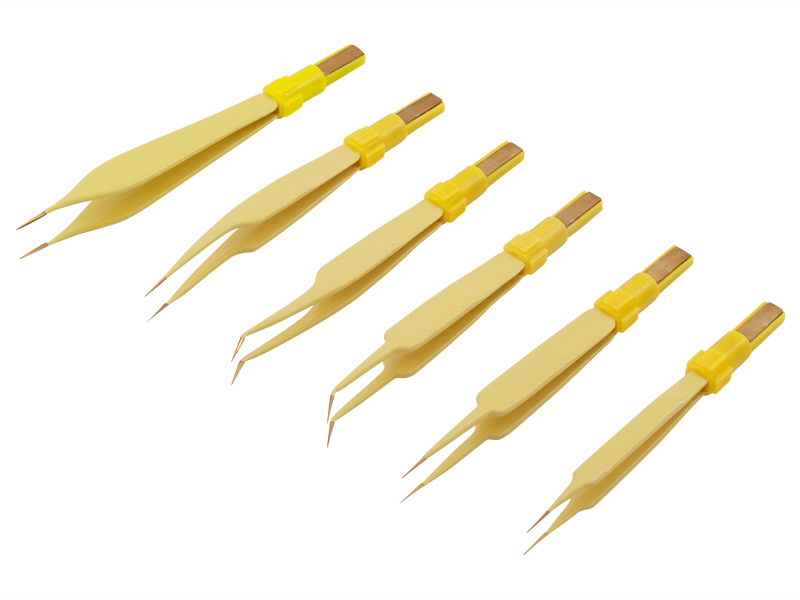
Precise tissue capture and coagulation or haemostasis in a wide range of applications.
Learn more
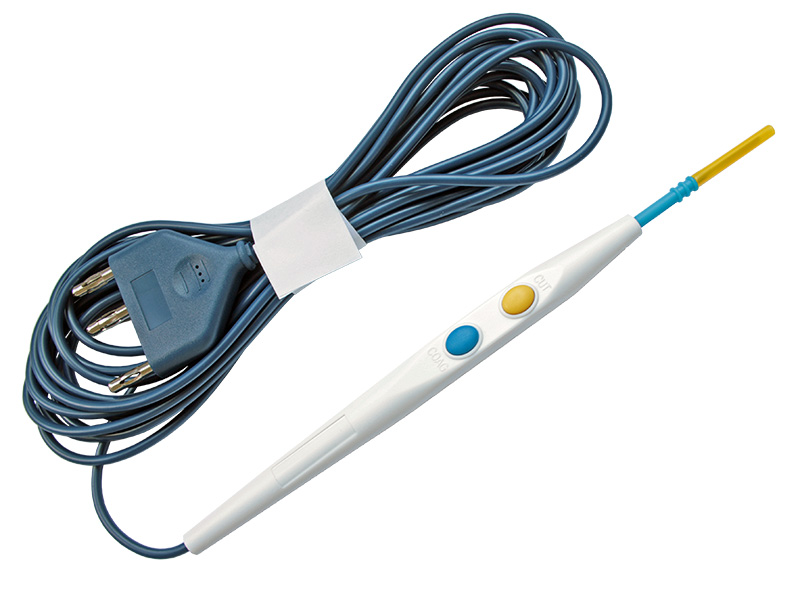
Electrosurgical pencils incl. accessories
Electrosurgical pencils for fatigue-free working and fume extraction to protect against toxic and carcinogenic fumes.
Learn more
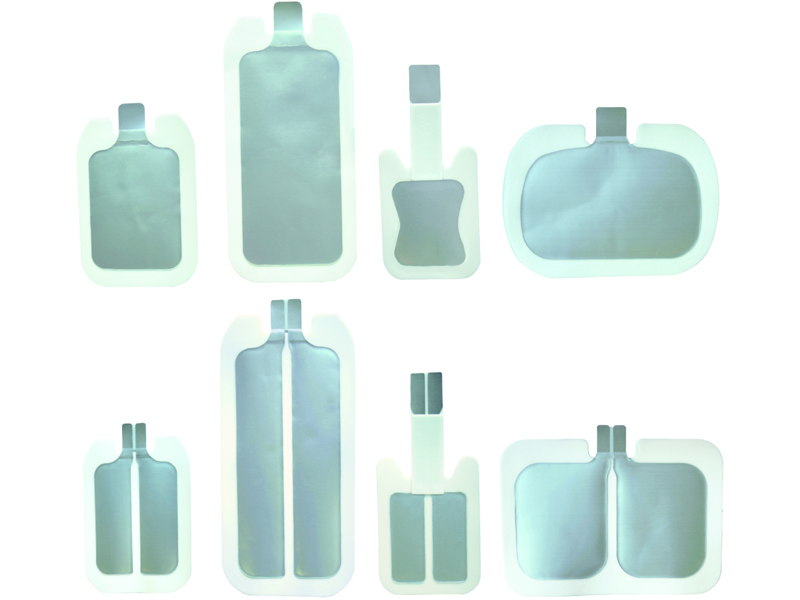
Neutral electrodes
For diverting the heat from the patient in the technique with monopolar electrodes.
Learn moreFAQ
Risks of HF surgery: Burns
Various causes can lead to the patient suffering unwanted burns. Please make sure that they have taken all precautions to prevent this. Further information on the risks of patient harm during radiofrequency surgery.
*What does coagulation mean?
Coagulation describes the precipitation, flocculation or coagulation of a substance, i.e. the transition of colloidal substances from the solution state to the gel state. In simple terms: "tissue coagulation". The tissue is slowly heated by the high-frequency current so that intra- and extracellular fluid evaporates. This causes the tissue to shrink. The resulting tissue glue and tissue shrinkage cause perforated blood vessels to close -> haemostasis.
Can bipolar forceps or monopolar electrodes also be used for operations on the brain, meninges or spinal cord?
No! Both systems are not intended for use on the central nerve system.
How can scabs be prevented from adhering to the monopolar electrodes?
Yes, all ActiLine ArTec monopolar disposable electrodes are also available with a highly effective non-stick coating made of titanium nitride ceramic or with PTFE (polytetrafluoroethylene) coating. It reduces the formation and adhesion of scabs significantly.
When is the use of tungsten electrodes recommended?
ActiLine ArTec XTreme disposable monopolar tungsten microdissection needle electrodes have ultra-sharp tips for fine, clean skin and tissue sections. The heat-insensitive insulation protects against unwanted burns.
When is it recommended to use silver electrodes?
Silver prevents the tissue from sticking due to its high thermal conductivity and offers the best non-stick properties (non-stick technology).
What are the advantages of integrated flushing
Due to a built-in rinsing channel, which starts at the forceps leg and ends at the tip of the forceps, a spray is applied directly to the coagulation surface. This prevents the tissue and forceps from sticking together. Some ActiLine EcoCeps models are available with integrated irrigation, please contact us.
Can bipolar forceps be obtained with a pre-connected cable?
All bipolar disposable forceps are also available with a pre-connected cable on request (Lengths: 3, 4 and 5 metres). With an international 2-pin plug or with special plugs or with special plugs from well-known manufacturers. The cable connection at the tweezer head is not glued but overmoulded. This prevents creeping currents due to the penetration of moisture.
Sources
R. Kramme (Hrsg.), Medizintechnik, DOI 10.1007/978-3-642-16187-2 _32, Springer-Verlag Berlin Heidelberg 2011 S.565 ff
Bundesinstitut für Arzneimittel und Medizinprodukte: "Vorkommnisse bei der Anwendung der HF-Chirurgie"
Bundesinstitut für Arzneimittel und Medizinprodukte: "Risiken der Patientenschädigung bei der Hochfrequenz-Chirurgie"

